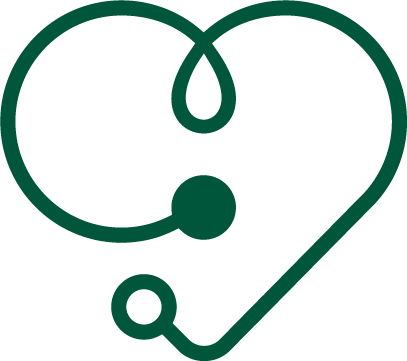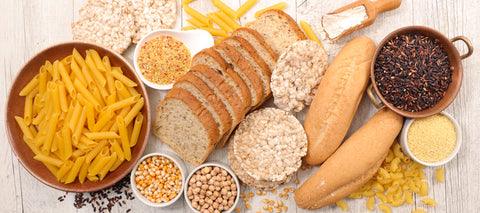To answer that, we really need to define what coeliac disease is.
Coeliac disease is a fairly common complaint, yet one, which is often misunderstood, even by the people who live with it. Coeliac disease is, at its core, an autoimmune disease whereby the body reacts adversely to a food protein called gluten. In sufferers of coeliac disease, the body attacks its own small intestinal cells in the presence of gluten, leading to inflammation and an inability to absorb nutrients of any kind.
Gluten in its natural form can only be found in three grains – wheat, barley and rye. However, these three grains are extremely common in Western cuisine, turning up in most bread, beer, cakes, breakfast cereals and even as a thickener in ready-made meals and sauces.
How does coeliac disease differ from wheat allergy or wheat intolerance?
Coeliac disease differs from wheat allergy both in its symptoms (see below) and its causes.
Coeliac disease is an autoimmune condition where the body’s immune system attacks its own healthy tissue. As gluten is absorbed into the intestines, the immune system registers the gluten and the intestines themselves as dangerous. That results in severe irritation and the symptoms, which can include any or all of the following:
- constipation
- indigestion
- flatulence and a bloated feeling
- pain or discomfort in the abdomen
- diarrhoea, which often carries a particularly unpleasant smell
These ‘first line’ symptoms can cause secondary symptoms such as:
- malnutrition and fatigue from lack of nutrients
- rapid weight loss
- dermatitis herpetiformis – a type of itchy skin rash
- speech, balance and co-ordination problems, such as ataxia
If the disease affects a young child, they might also experience delayed puberty and a slow growth rate, as a result of their inability to fully absorb nutrients from food.
Wheat allergy, on the other hand, is a purely allergic reaction. There are four types of proteins found in the wheat grain; albumins, globulins, gliadins and glutenins.
There are two primary kinds of wheat allergy – the common variety and an extreme form called exercise-induced anaphylaxis.
The common wheat allergy is characterised by:
- diarrhoea
- nausea, vomiting and possible stomach cramps
- difficulty breathing
- headache
- congestion of the nose
- an itchy skin rash, which may be accompanied by swelling or hives
- swelling, irritation and itching of the throat and mouth
This can be similar to so called ‘bakers’ asthma’, where the allergic person has a reaction to inhaled wheat particles rather than ingested wheat. The symptoms are nearly identical to asthma.
On the other hand, exercise-induced anaphylaxis is quite dangerous. This only tends to manifest if a vulnerable person exercises within a few hours of eating wheat. If untreated, it can result in hospitalisation, and even death. Its symptoms include:
- difficulty breathing
- a weak and rapid pulse
- nausea
- vomiting
How can you have coeliac disease or wheat allergy diagnosed?
Coeliac disease and wheat allergy can both only be diagnosed by a doctor. You should see your GP, who may be able to conduct the test themselves or may refer you to a specialist.
Diagnosis of coeliac disease is a fairly involved procedure and is not done casually. Initially, the doctor will order a series of blood tests looking for coeliac disease antibodies. If these tests indicate that you may indeed have coeliac disease, the doctor may order a biopsy – removing a tiny sample of your intestinal tissue – to confirm if the disease is present.
Initial diagnosis of a wheat allergy can be accomplished through a skin prick or an IgE blood test. A skin prick test involves your skin be pricked or abraded using small needles coated with specific wheat proteins. If redness or swelling develops quickly, there is a high likelihood that you are allergic to wheat. Your doctor may also order blood tests or ask you for a detailed food history to confirm a wheat allergy.
What foods should coeliac sufferers avoid?
The number one thing you need to avoid is wheat, but that is more difficult than it sounds. A list of foods containing wheat would include:
- barley
- barley malt
- bulgur
- chicken broth
- couscous
- cracked wheat
- durum
- einkorn
- emmer
- farina
- faro
- fu (a common Asian ingredient)
- gliadin
Gluten may also show up as an ingredient in:
- graham flour
- kamut
- matzo
- processed oats (unprocessed oats contain no gluten)
- rye
- spice mixes or seasonings
- seitan
- semolina
- soba noodles
- some salad dressings
- spelt
- Triticale
- Mir
- veggie burgers which are not specifically gluten-free
- wheat bran
- wheat germ
- wheat starch
Soy sauce, malt vinegar and many other condiments often contain gluten, so make sure to read your labels! Also look for gluten-free oats as standard oats may have been contaminated in the production process, whilst considered safe for the majority of coeliac disease sufferers some people do experience adverse reactions to the avenin in gluten-free oats.
There are a surprising amount of food items that contain gluten, which you would never guess would. Items such as sausages (sausage meat is often mixed with wheat rusk before being encased), soy sauce, dry roasted nuts (if you eat nuts, choose the salted or plain varieties), stock cubes, corn flakes, and even chocolate. Whilst a lot of these in theory do not contain gluten, do check the labels or buy from the ‘gluten free’ section of the supermarket. Manufacturing processes can cause certain foods to be contaminated with gluten from other products.
Some people may avoid certain drinks, believing that they potentially include gluten. In fact, if you enjoy the odd ‘tipple’, there are a wide variety of alcoholic and non-alcoholic drinks available to you that are gluten free. You can enjoy a range of fruit juices and squashes, flavoured waters, fizzy drinks, as well as cider, port, sherry and wine, although there are a few gluten free beers offered in selected supermarkets.
What can you do to make living with coeliac disease easier?
Besides avoiding the foods listed above, you should consider seeing a dietician, and read up on eating a gluten free diet.
Whilst difficult for you to deal with, adopting a ‘clean sweep’ through all areas in your kitchen or pantry will definitely benefit you, to remove all traces of gluten. Having a family may make this difficult, but do as best as you can and keep foods separate to avoid any cross contamination. It is wise to clean down surfaces and shelves before you do any food preparation between meals, just in case there are any traces of gluten.











